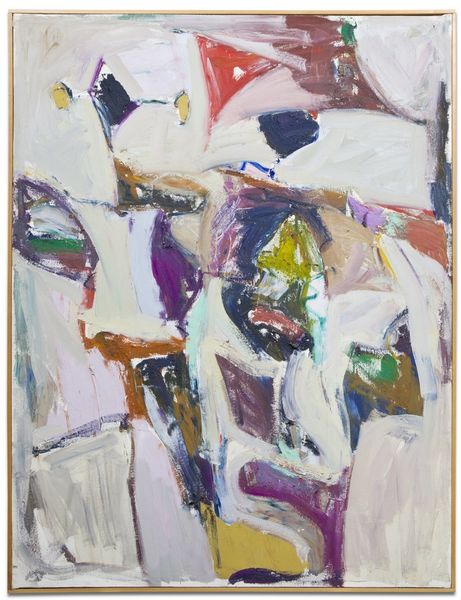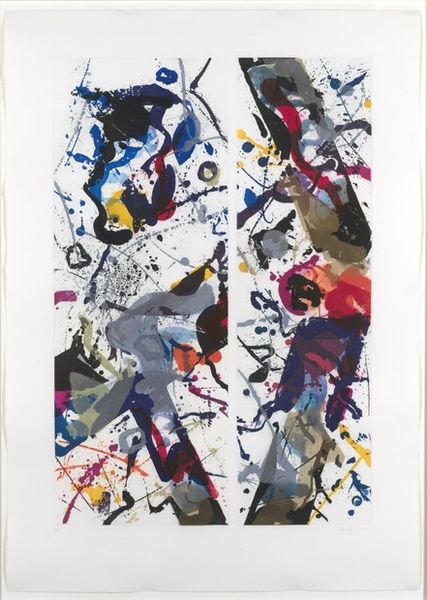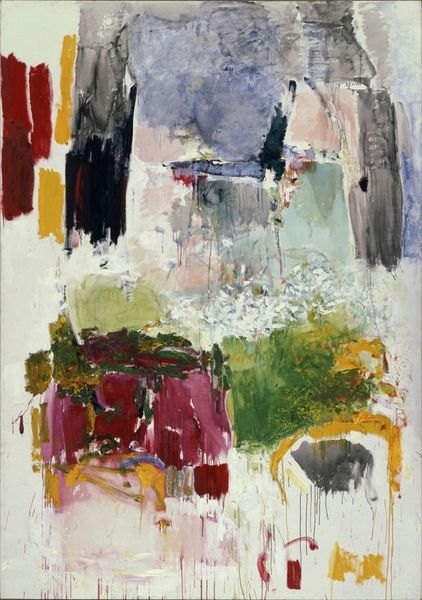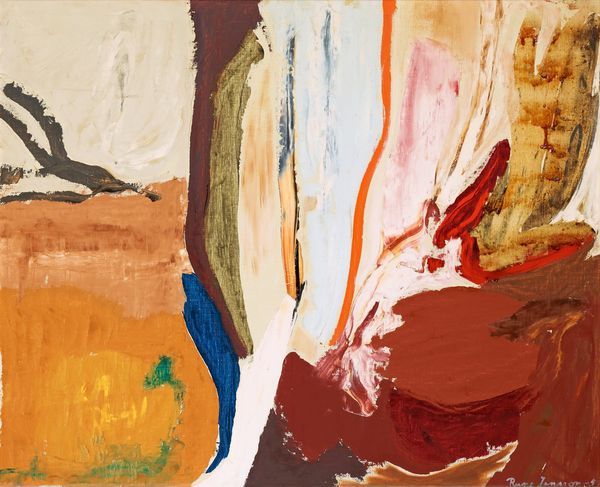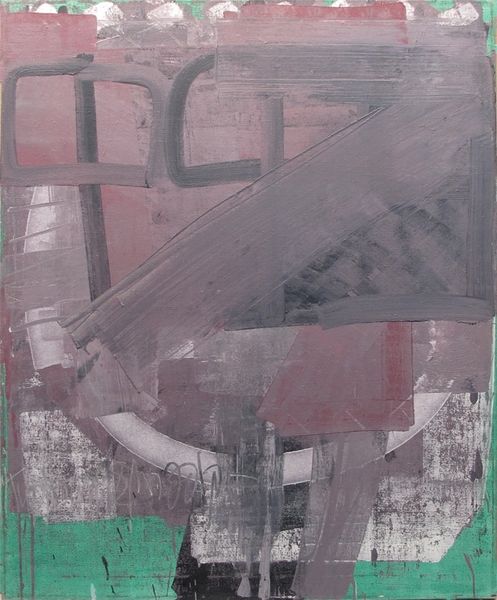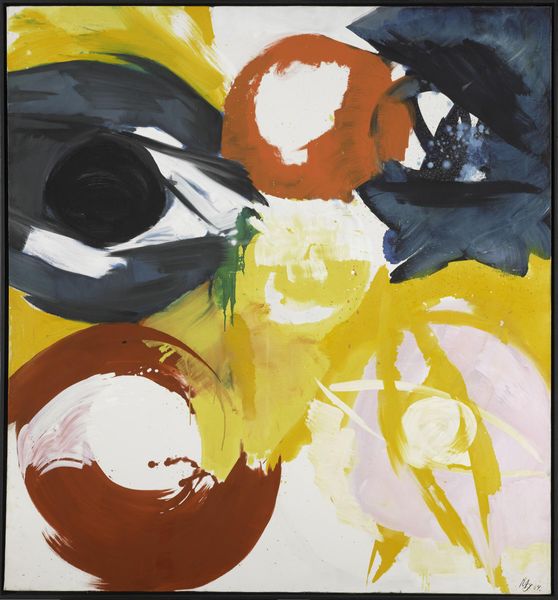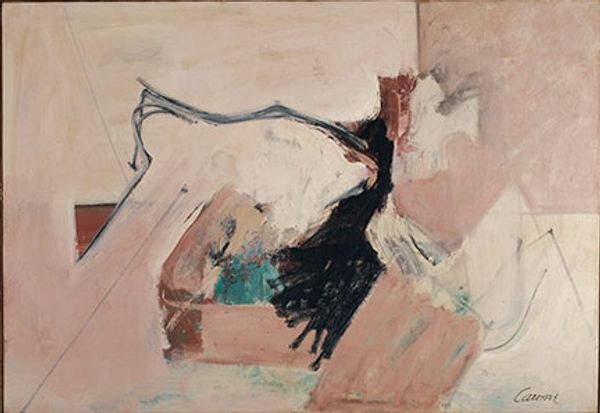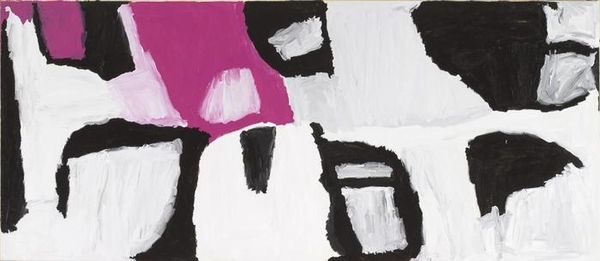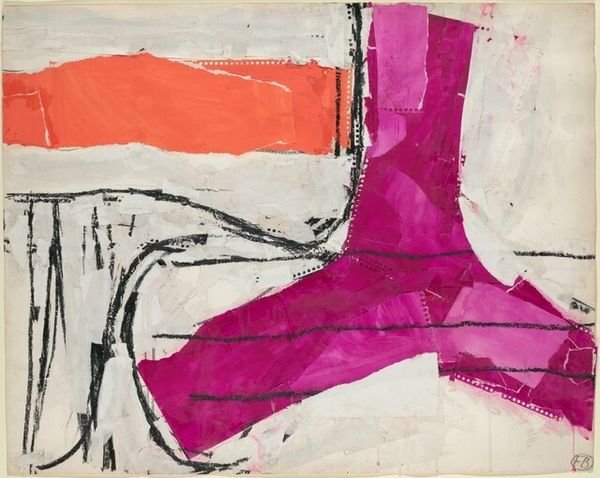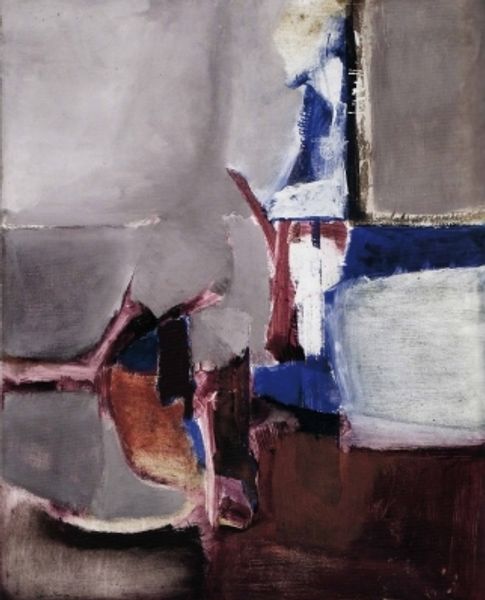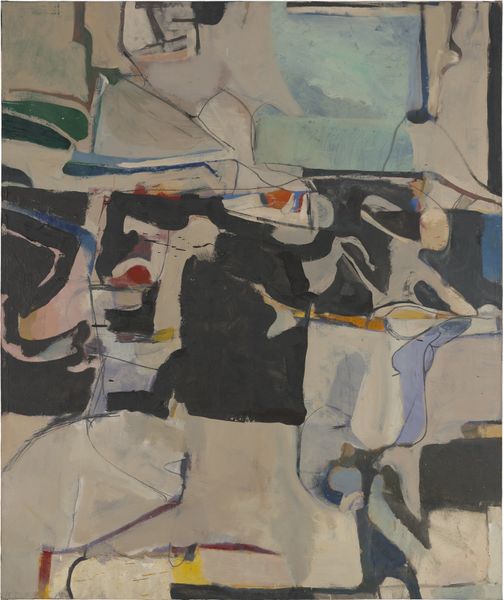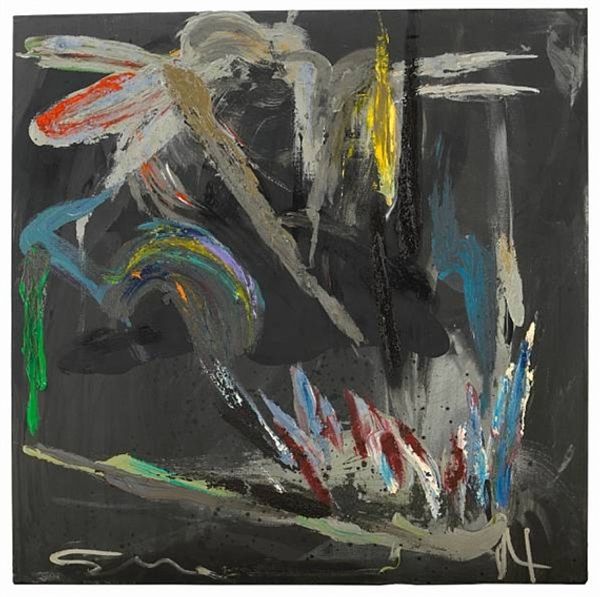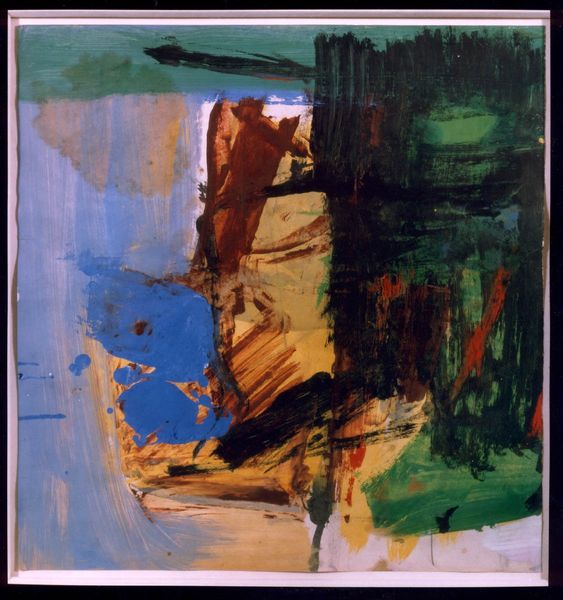
painting, acrylic-paint
#
abstract-expressionism
#
abstract painting
#
negative space
#
painting
#
acrylic-paint
#
abstraction
Copyright: Ed Clark,Fair Use
Curator: Let’s turn our attention now to Ed Clark's "Winter Birch," an acrylic painting dating back to 1959. Editor: My first thought? A stark, almost violent contrast. It feels raw, like a snapshot of nature stripped bare. Curator: The composition definitely hinges on contrasting elements. Notice how the forceful, dark brushstrokes dominate the upper portion of the canvas, almost pushing down on the lighter, more delicate hues at the bottom. It's a clear example of Abstract Expressionism, where gesture and materiality take precedence. Editor: Absolutely, but I wonder, in the context of the late 50s, if Clark is also making a statement about visibility and absence. The stark whiteness around the more gestural marks might also read as symbolic of a certain kind of social erasure, a way to think about who gets remembered and who is pushed aside in collective narratives. Curator: That's a compelling reading, highlighting the political dimensions latent in Abstract Expressionism. From a formalist perspective, though, I’m more intrigued by the artist’s handling of negative space, especially in the upper register of the painting. Note the tension and balance in relation to positive space; it allows for air to circulate. The dark and the white activate each other and establish an asymmetrical rhythm throughout the picture plane. Editor: I see your point, especially in how he creates a visual rhythm that emphasizes that constant tension. This could even underscore feelings that came with navigating identity at a very precarious moment. How does Clark position the birch – the symbolic, representative figure – within this abstract landscape, and how does the period he was painting this affect it? Curator: It’s a painting that reveals more layers each time one returns to it. Clark successfully engages us to look closer into what lies beneath abstraction. Editor: It also challenges us to think critically about the different dimensions of representation and consider ways of pushing back against hegemonic visual structures. A lot to ponder!
Comments
No comments
Be the first to comment and join the conversation on the ultimate creative platform.
